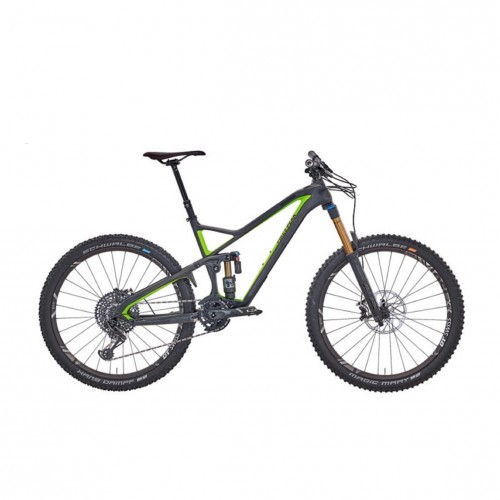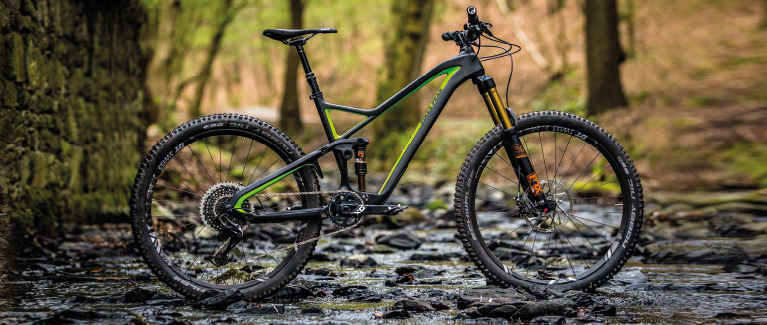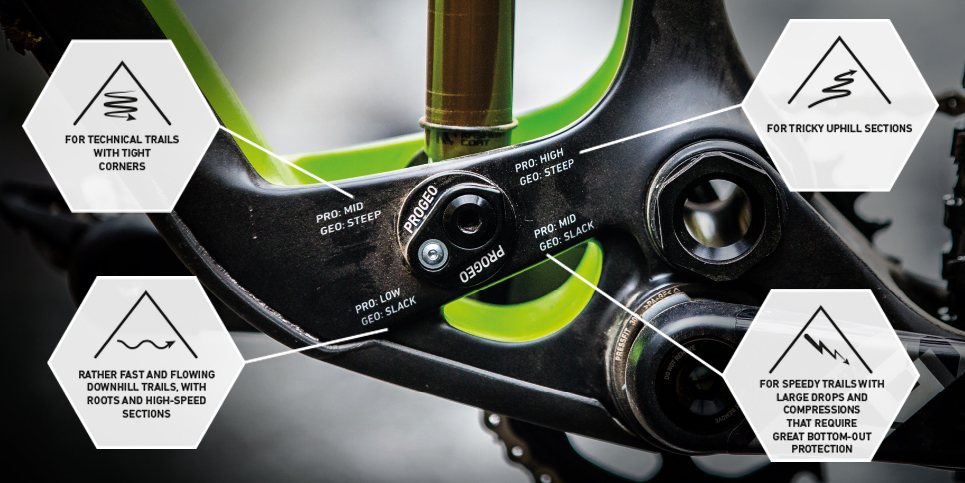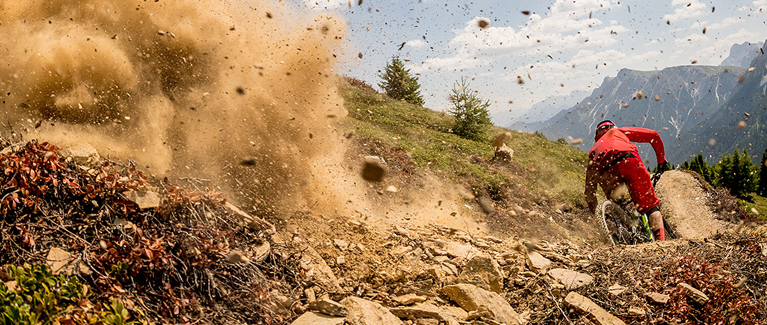
Rose Pikes Peak – Make Two Out Of One!
Sat 1st Jul, 2017 @ 9:30 pm
A base for all-mountain fun or passionate enduro action. This summer, Rose Bikes presents a true quick-change artist – the Pikes Peak. The basis of the new 27,5” carbon full-susser can be equipped to either form an all-mountain bike with 150 mm of travel or a 165mm enduro racer.
The frame of the new Pikes Peak – made from high-quality carbon – weighs a mere 2380 grams and is available for two different areas of use, depending on the setup: “The enduro model with 165 mm of travel comes with slacker angles and an increased bottom bracket height for smoother running and more ground clearance on speedy downhill rides. The trail version with a 150 mm fork on the contrary comes with a steeper seat and head tube angle for improved cornering and more propulsion. Depending on the setup, the Pikes Peak has different riding characteristics,” explains Max Sistenich, developer at Rose Bikes.
ProGeo technology for great versatility
Another metamorphosis is offered by the brand-new ProGeo technology patented by Rose Bikes and used for the first time on the Pikes Peak. “ProGeo allows the rider to adapt the characteristics of the Pikes Peak to the prevailing terrain with a flick of the wrist and on the fly, e.g. on the trail. The term is composed of the words progression and geometry. Progression describes the rear stay characteristics and the resulting bottom-out protection. By setting up the bike’s geometry, you can adjust head and seat tube angle, as well as the bottom bracket drop,” says Max about the new feature.
With the Pikes Peak, the bicycle brand from Bocholt has also successfully set an example in respect of design. The modern geometry of the Pikes Peak is characterized by an especially long top tube, yet a short stem of 30 to 40 mm harmoniously compensates this length. Thanks to 430 mm short chain stays, the bike offers an agile ride despite its huge reach. The kinematics of both product lines – the all-mountain and the enduro version – is designed for a 1×11 drivetrain and benefits from the new Boost standard: Thanks to a wider axle and the resulting wider bracing angle of the wheels, the rear stay is especially stable and stiff. Besides, ROSE intentionally did without a front derailleur to get more installation space for a wider bearing unit – another positive aspect for the rear stay’s stiffness.
Digging deeper: ROSE Bikes developer Max Sistenich about ProGeo
Max, you are the one who developed ProGeo. How does this new system work?
ProGeo offers you four different positions for the rear shock linkage. Whether quick-response or soft, a steep angle for technical sections or a flat one for speedy downhill rides – with ProGeo, you will quickly find the right setup. Generally, you can say that the more progression you have, the tighter the
suspension will be. The rider gets direct feedback from the ground and becomes one with the trail. With less progression, the suspension will be more forgiving and the rear stay will easily eliminate rough grounds. As regards geometry, the customer can either choose a flat geometry, the so-called SLACK position, or increase the head and seat tube angle of the Pikes Peak by 1° in the STEEP position – for more agility on winding trails.
Which of the four ProGeo settings is best for which terrain in your point of view?
ProGeo turns the Pikes Peak into a real all-rounder with a huge range of use. With high progression and a steep geometry, you can pedal your bike with great efficiency and easily climb mountains. Therefore, the ProGeo setting “PRO: HIGH/GEO: STEEP” is perfectly suitable for tricky uphill sections. When set to “PRO: MID/GEO: STEEP”, the bike has medium progression, which is perfect for technical trails with tight corners. A flat geometry corresponding to the ProGeo mode “SLACK” is perfect for riding downhill. In combination with medium progression, e.g. the third possible setting “PRO: MID/GEO: SLACK”, the Pikes Peak is turned into a downhill artist for speedy trails with large drops and compressions that require great bottom-out protection. If the downhill is rather fast and flowing, with roots and high-speed sections, I recommend a lower progression in combination with a flat geometry, that is to say the ProGeo setting “PRO: LOW/GEO: SLACK”.
How do you set up the ProGeo positions?
It doesn’t take rocket science to adjust the positions so that even technically unexperienced riders will be able to do so: Customers can adjust the desired position via a flip chip that is securely integrated into the frame using the 6 mm hex key of their multitool. A spring preload makes sure the position snaps into place easily. The advantage of our system is that adjustments can quickly be made at the side of the trail, as no moving parts must be removed. In this way, you won’t lose any small parts on your tour.
How long have you been working on the development?
We fairly quickly knew what the basic parameters should be and swiftly made the first drafts. However, until the start of production and the perfect interaction between ProGeo and the Pikes Peak, it took us around three years to develop, construct and intensively test the bike. Rome was not built in a day!










